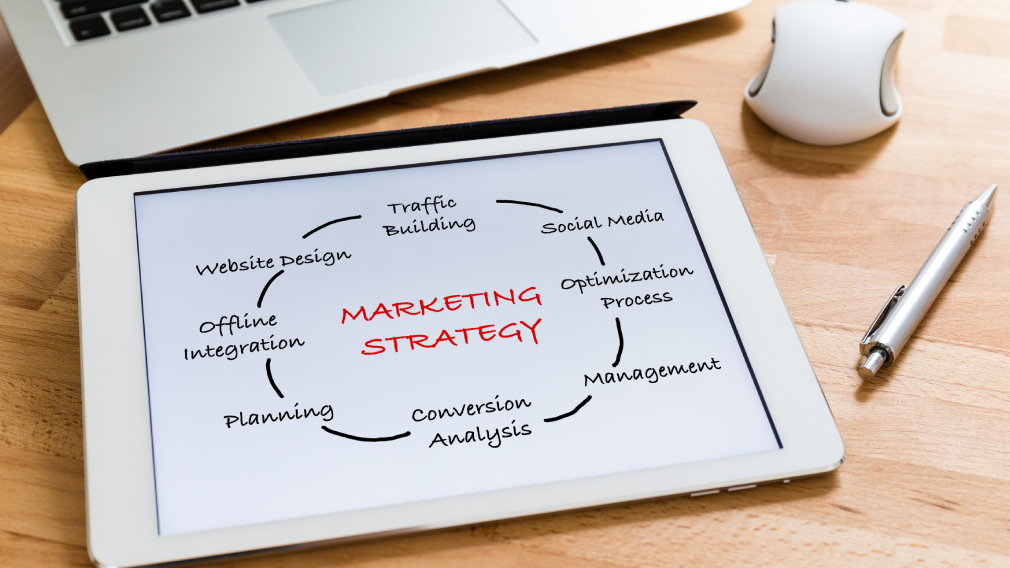In today’s marketplace, building a digital presence from scratch can feel both exciting and daunting. You may sense the pressure of establishing a professional online footprint while juggling countless other responsibilities. Yet, creating that presence offers hope: a chance to refine your brand, gain visibility, and foster genuine connections with your audience. By following a clear roadmap, you can shape an online environment that resonates with your goals, delivers value to your customers, and positions you for sustainable growth.
Below, you will find a straightforward guide that combines empathy for your unique challenges with practical strategies for each step of the process. These insights stem from our experience at Antilles serving as an outsourced marketing department for small to mid-sized businesses, where we have witnessed common pitfalls and successes. Whether you’re a fractional CMO, a consultant advising a client, or growing your own enterprise, these methods can help you create a tailored and supportive digital ecosystem.
Recognize the core reasons for going digital
Moving your brand online requires more than just a logo and a website. It hinges on actively understanding why digital matters for your specific situation.
- Build credibility with new and existing customers. According to HubSpot, 97 percent of consumers use the internet to find a business (HubSpot), so appearing in relevant search results fosters consumer trust.
- Reduce barriers to finding information. When customers can locate your products or services effortlessly, they are more inclined to explore further.
- Open new pathways for communication. Channels like social media or email allow you to directly interact, provide personalized support, and gather feedback.
These core reasons remind you that a digital presence is about creating a robust platform. By meeting people where they already spend their time—on social networks or search engines—you promote a sense of availability, approachability, and transparency.
Establish a clear strategic foundation
When you envision your online presence, imagine it as a structure built on firm ground. Without thoughtful planning, any superficial additions—like hasty ads or random blog posts—can collapse over time. Start by solidifying your fundamentals.
Define your brand purpose
You need to identify the deeper reason behind your brand’s existence. This is especially important if your aim is to form a long-lasting relationship with a specific audience.
- Ask yourself: What value do you bring, and why does it matter?
- Clarify your brand’s tone, priorities, and perspective.
- Explore what truly motivates your target audience—whether they are looking for cost-effective options, premium expertise, or community building.
Knowing your brand purpose helps you stand out meaningfully and communicate why customers should trust you. It also ensures your social media posts, email campaigns, or articles align with a consistent narrative.
Identify a focused audience
Attempting to speak to everyone often results in reaching no one deeply. Instead, define the precise audience you want to serve. By understanding your audience’s concerns and interests, you can craft relevant materials that address their pain points and aspirations.
- Consider leveraging buyer personas. These fictitious profiles typically include demographics, goals, and challenges. According to Landingi, 56 percent of companies see higher-quality leads when they use detailed personas (Landingi).
- Segment your audience based on meaningful behaviors, such as purchase history or engagement patterns. This helps you refine your messaging and focus on the groups most likely to benefit from your services.
When you grasp specific triggers—like budget constraints or the need for personalized solutions—you can tailor your strategies and foster the support necessary for lasting success.
Craft measurable goals
To shape a supportive environment for growth, your online efforts require tangible objectives. These objectives guide your decisions and help you track progress over time. Consider:
- Traffic targets (unique website visitors or social media reach)
- Conversion objectives (email sign-ups, downloads, purchases)
- Engagement metrics (comments, shares, DMs)
- Brand-based goals (awareness, authority, mention in comparison articles)
Be sure to clarify the “why” behind each goal, whether it’s revenue generation, brand awareness, or customer retention. The more specific the intention, the easier it is to measure. You might find it helpful to learn how to set marketing goals and kpis to refine your approach further.
Develop compelling content and optimize for search
Quality content sits at the heart of your digital presence. As Michigan Tech University highlights, high-value content that resonates with users is one of the strongest drivers for search engine ranking (Michigan Tech University).
Build a content strategy
First, take a moment to assess the information your audience craves. Whether it’s tips for solving a common business challenge or insights about emerging trends, your content must align with your expertise.
- Brainstorm topics: Create a list of potential articles, videos, or podcasts related to your industry.
- Organize ideas into themes: Group related content so you can deliver deeper insights.
- Choose formats strategically: Written blogs, videos, infographics, or how-to tutorials each serve a different slice of your audience’s preferences.
Kentucky-based small businesses, for instance, might appreciate location-specific advice, while a broader, national audience might find universal industry insights more appealing. The supportive tone you bring can help them feel confident in applying these strategies themselves.
Emphasize search engine optimization (SEO)
At its core, SEO ensures the right people find your content at the right time. If you’re serious about building a digital presence from scratch, consider both onsite (keywords, content structure) and offsite (links, site authority) optimization.
- Research relevant keywords: Identify phrases describing your products or services and integrate them naturally into your website copy.
- Use descriptive URLs: Instead of “site.com/page1,” consider “site.com/improve-sales-leads” to reflect the content’s main topic.
- Organize pages into directories: Group topically similar pieces for easier navigation, boosting your page’s relevance.
- Add metadata: For each piece, create accurate and concise meta titles and descriptions to encourage clicks from search results.
If you’d like to explore broader tactics, our resource on what to include in a marketing strategy proposal can guide you in presenting an SEO blueprint to stakeholders or clients.
Incorporate high-quality visuals
Images and videos enhance user experience, encouraging people to linger longer on your site. Google’s documentation emphasizes adding descriptive alt text, optimizing your image file names, and placing visuals near relevant text (Google Search Developer Documentation).
- Use consistent branding: Photographs should reflect your brand’s color palette and mood.
- Include relevant infographics: Offer data-driven charts to clearly communicate numbers or trends.
- Add alt text: Ensure each image can be understood by search engines and visually-impaired visitors.
Balancing these elements nurtures an environment in which site visitors feel welcomed and informed, reflecting an organized and empathetic approach.
Leverage social media and email for deeper connections
Social and email platforms play a pivotal role in driving awareness and engagement. Establishing a presence on channels where your audience naturally spends time fosters camaraderie, much like a supportive group setting where everyone shares stories and learns from one another.
Choose your social channels carefully
While every channel boasts unique benefits, you don’t have to use them all. Instead, select platforms that align with your brand and audience habits.
- LinkedIn: Great for B2B visibility, networking, and thought leadership
- Facebook/Instagram: Ideal for building a community, showcasing visuals, and running targeted ads
- TikTok/YouTube: Useful for video content that demonstrates expertise or entertains
- Twitter/X: Effective for quick updates, news, and insights from influencers
Connecting with users on their preferred channels cultivates trust. Remember to remain ready to handle direct messages, queries in the comments, or feedback—your audience appreciates an active participant, not just a broadcaster. This mindset underscores the idea of “comprehensive care,” ensuring no questions go unanswered.
Harness email marketing
Email continues to be a cornerstone for digital marketing due to its ability to deliver personalized experiences. According to Passionates, providing valuable insights in email campaigns can boost brand awareness and sales, in addition to fostering a sense of loyalty (Passionates).
- Segment your list: Customize your messaging based on customer demographics or past behavior. For instance, repeat customers might receive loyalty perks, while new subscribers get introductory offers.
- Plan a content calendar: Highlight upcoming product launches, share how-to guides, or extend invitations to webinars.
- Track open and click-through rates: Use these metrics to refine subject lines, content structure, or send times for greater impact.
Done well, email campaigns become an individualized plan for guiding subscribers through each marketing funnel stage. You might also explore marketing funnel stages explained to clarify how to move audiences from initial interest to firm commitment.
Integrate paid advertising within your budget
Paid channels—such as PPC (Pay-Per-Click) ads on Google or social platforms—offer an immediate way to boost brand visibility, especially when you’re just starting out.
Understand your paid options
Several paid avenues exist, each with unique targeting options and formats. By tailoring your approach, you deliver ads that address genuine needs.
- Google Ads: Target users actively searching for a solution your brand provides.
- Social ads: Reach people with specific interests, demographics, or behaviors across platforms like Facebook, Instagram, or LinkedIn.
- Display ads: Place visually compelling ads on relevant websites to capture general awareness.
Remember to keep your ads’ messaging cohesive with your website and content strategy. Consider exploring how to allocate a digital marketing budget to see how paid strategies can fit alongside SEO, social media, and other marketing channels.
Aim for regular optimization
Paid campaigns need ongoing analysis. By reviewing which ads generate conversions or engagement, you can allocate resources more effectively. This aligns with the concept of “support necessary for lasting recovery” in a marketing sense—you continually monitor performance, adjust bids, rotate creatives, and update targeting based on real-time data.
- A/B test ad creatives and landing pages
- Check cost-per-click, cost-per-acquisition, and overall return
- Scale up what is successful and refine what is underperforming
An iterative approach helps you accommodate shifts in your market’s preferences while ensuring your paid campaigns remain relevant and cost-effective.
Lean on a holistic approach to growth systems
When you combine content, SEO, social outreach, email marketing, and paid ads, you create a comprehensive system that supports every stage of your customer’s journey. Sequencing these elements effectively underpins stability, so no single channel bears the entire workload.
Phase 1: Audit and setup
Begin by reviewing your current assets and identifying gaps. This is an excellent time to audit your entire marketing system so you know what’s working and what needs improvement.
- Perform a thorough website audit
- Investigate engagement analytics on social platforms
- Assess existing email processes, segmentation, and automation
Phase 2: Launch and align
Once you have a plan, align brand messaging across all channels. By doing so, your website, social profiles, and ads share a consistent tone and style. This alignment:
- Reinforces brand recognition
- Minimizes confusion when audiences switch from one platform to another
- Offers a sense of unity that people find reassuring
If you’re introducing a new product or service, you might also explore a go to market strategy for new businesses to align your brand rollout.
Phase 3: Optimize and measure
Planning and launching are only half the journey. Ongoing optimization allows your strategy to evolve with shifting market trends or new audience preferences.
- Revisit your buyer personas periodically so you don’t lose touch with audience changes.
- Analyze performance metrics such as site traffic, social engagement, open rates, or ad conversions.
- Refine the channels that yield the highest-quality leads or sales.
If you need guidance evaluating efficacy, check out how to measure roi from digital campaigns. Statistical insights show you which channels foster real results vs. those that need rethinking.
Foster long-term audience relationships
Beyond conversions, digital success hinges on continuing to serve and engage your community. Think of this relationship-building process as providing the “comprehensive care” your audience needs to keep growing.
Encourage two-way communication
Actively solicit feedback, questions, or collaborative ideas from your subscribers and followers. Conduct polls, run Q&A sessions, or invite user-generated content. Encouraging people to share their experiences creates a more inclusive environment that supports deeper trust.
- Respond to comments and messages promptly.
- Feature success stories or testimonials that show tangible outcomes.
- Use personal replies in emails to humanize your brand.
Track emerging trends and adapt
Staying relevant involves an ongoing commitment to learning. With digital tools evolving annually, it can be challenging to keep pace. But adaptation ensures your strong foundation continues to flourish.
- Watch for platform updates, such as new ad options or algorithm changes.
- Research emerging channels or formats (like fresh video-sharing platforms).
- Explore advanced automation or AI-driven personalization for stronger targeting.
Staying informed means you can pivot smoothly when your audience’s preferences shift. This forward-looking approach is key to maintaining momentum in your business strategy.
Plan for budget alignment and resource allocation
Financial resources are finite, and spending them wisely can make or break your digital success. The best method is to structure your budget around your objectives, recognizing each channel’s role in your overall strategy.
- Allow for a balanced spend across content production, SEO, social media, and paid ads.
- Add contingencies for experimentation and pilot programs to ensure your brand remains flexible.
- Monitor spending vs. returns monthly or quarterly, revisiting budget allocations as you pinpoint what resonates most with your audience.
If you want a deeper dive, consider reading how to choose the right marketing agency to determine if outsourcing or contracting specialists can strengthen your in-house team.
Reassess, refine, and grow
Like any worthwhile endeavor, building your digital presence isn’t a one-time event—it’s an ongoing activity that evolves as your business matures. Regular assessments not only maintain your momentum but also open doors to creative expansions.
- Conduct routine check-ins: Evaluate whether your funnel has bottlenecks. Look into how to prioritize marketing channels to focus on those showing the best outcomes.
- Keep exploring: Experiment with new social media trends or advanced SEO techniques if you see them delivering value.
- Reward loyalty: Keep longstanding customers engaged through referral programs, exclusive offers, or behind-the-scenes insights.
By adopting this cyclical approach, you ensure your brand is never static. Adjusting and refining your tactics reinforces a sense of progress, which your audience notices and appreciates.
Conclusion
Building a digital presence from scratch might seem imposing, but with dedication and an empathetic strategy, you can transform it into a positive, growth-oriented experience. By understanding your brand’s purpose, defining your audience, crafting strong content, and maintaining an active online presence across your chosen channels, you create a powerful system that supports each visitor’s journey. Every step—from launching a website to optimizing ad spend—can be viewed as a tailored investment in your audience’s trust and your brand’s authority.
From our vantage point at Antilles, guiding numerous small to mid-sized businesses, we’ve witnessed the tangible benefits a well-planned digital framework can bring: expanded visibility, meaningful connections, and consistent revenue growth. If you remain open to feedback, adjust to new trends, and center your marketing around genuine value, you will find yourself capable of forging a digital presence that is both sustainable and impactful for years to come.
Above all, remember that your goals and your digital community deserve the same level of care and attention that fosters success in any endeavor. With continued commitment to empathy, quality, and measurable progress, you can rise above competitors and achieve the digital outcomes you truly desire.















